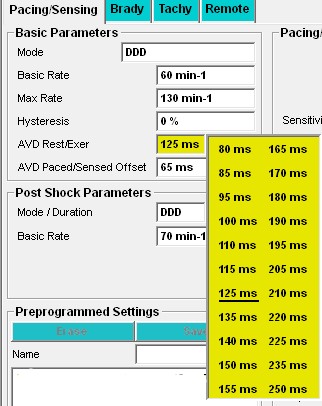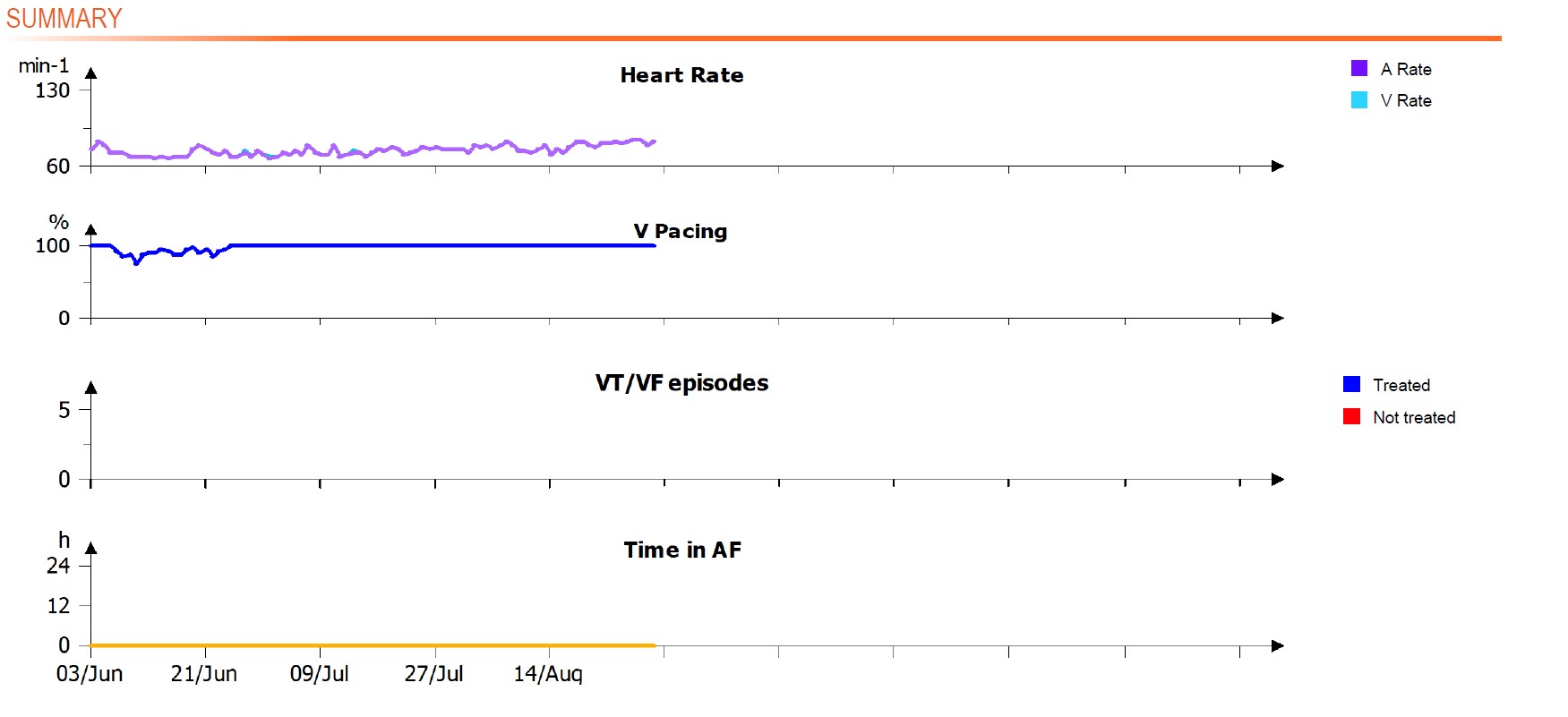Drop in percentage CRT (4)
Case Summary
0 of 1 Questions completed
Questions:
Information
You have already completed the case before. Hence you can not start it again.
Case is loading…
You must sign in or sign up to start the case.
You must first complete the following:
Results
Results
Time has elapsed
Catégories
- Pas classé 0%
-
Easier seen on the 12-lead ECG, when the ventricular EGM shows different morphologies and when intrinsic events are sensed just before the end of the AV interval, one should consider shortening the AV intervals. In MicroPort devices, this is also suggested in the Diagnostics/AIDA screens under PM/ICD as shown in the figure below:
On the programmer Parameters screen, under Pacing/Sensing, it is possible to evaluate and change the AV delays during rest and exercise. They were shortened from 125/80 to 80/45 ms.
The EGM instantly normalised, confirming the diagnosis and excluding the presence of premature ventricular complexes as differential diagnosis.
A remote monitoring follow-up a few months later shows correction of the drop in % CRT by shortening of the AV interval:
Most patients with a CRT device still have intrinsic conduction through the AV node and the right bundle branch toward the ventricles. When the AV interval is programmed too long, intrinsic conduction may intermittently be present with sensing of ventricular events (intrinsic breakthrough). These events are often mistaken for premature ventricular complexes but small changes in morphology seen on the ECG/EGM and the occurrence at the AV delay limit makes the diagnosis possible. Reprogramming will result in direct changes on the EGM and more certainly on the ECG.
- 1
- Current
- Review / Skip
- Answered
- Exact
- Inexact
-
Question 1 of 1
1. Question
ExactInexact





